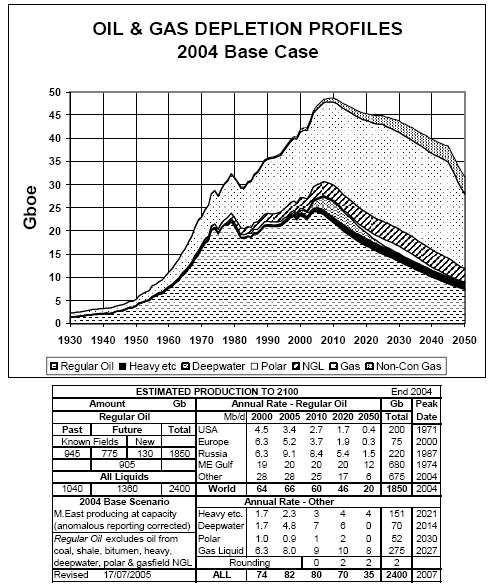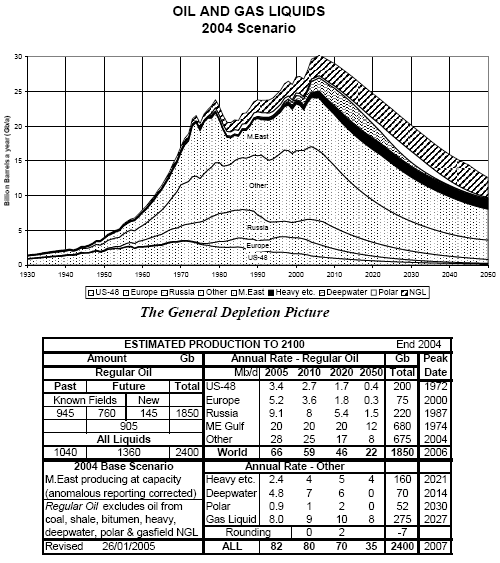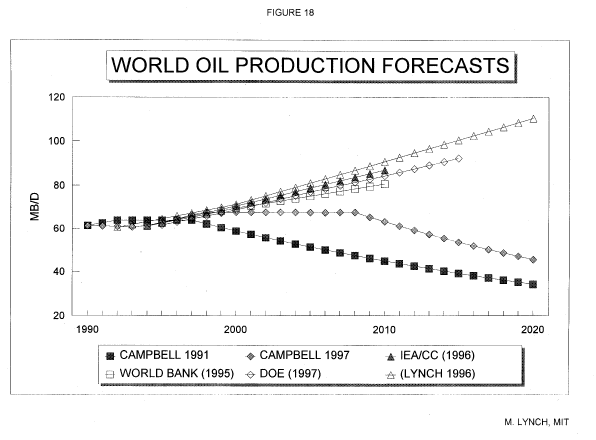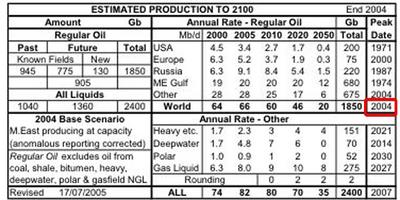70. LASER DRILLING
From Alexander's Gas and Oil Connection (original source: The Denver Post):
Laser beams soon may be drilling oil and gas wells
14-01-04 A revolutionary method for using laser beams to drill oil and gas wells moved a step closer to reality in the laboratories of the Colorado School of Mines.
The university announced it has acquired six laser technology patents from Boeing in a major step forward in the transfer of military laser uses to civilian applications. If the adaptation of technology borrowed from Reagan-era "Star Wars" military programs is successful, it will mark the first fundamental change to rotary drilling techniques since the concept was invented in Britain in 1845.
[...]
Laser drilling, Graves said, would have several advantages over conventional drilling:
-- Costs could be at least 10 times lower and up to several hundred times less than wells drilled with rotary rigs. For example, a typical, 10,000-foot gas well in Wyoming's Wind River Basin costs about $ 350,000 to drill. Laser drilling would drop that cost to $ 35,000 or lower, Graves said.
-- A laser drill's "footprint" -- the amount of surface space it occupies -- could be as little as 100 square feet, or even less with some models.
-- The laser rigs could be transported to drilling sites in one semi-trailer load. Conventional rigs take up several thousand square feet of space and require numerous truck trips to haul equipment.
-- Lasers could drill a typical natural-gas well in about 10 days, compared with 100 days for some conventional wells.
"You're looking at three months of disruption versus a week or so of disruption with a laser drill," Graves said.
-- Lasers could be programmed for precise well diameters and depths. In addition, they could alternately drill coarsely to deliver mineral samples, finely to vaporize rock and leave no waste materials, or with intense heat to melt the walls of well bores, thus eliminating the need to place steel casing in wells.Source
Compare this with the peak oiler theory:
So, as we slide down the Hubbert's Curve, not only will the rate of production decrease, but the cost of that production will increase.
Laser drilling may actually make production of the "hard to get" oil and gas easier than production of the stuff which was "easy to get". This would cause a lot of havoc with reserve numbers because commercially unfeasible small/deep deposits would suddenly become "proven" (i.e. exploitable with current technology).
-------
FAQ by Ramona Graves on her research:
Laser Drilling FAQ
Ms. Graves in the lab:

The direct diode laser (DDL) she is currently using is 4000 watts. She doesn't provide a specific energy for the DDL, but the figure for an Nd:YAG laser is about 6kJ/cm3. So if we were to use a 4000watt Nd:YAG laser, and drill a hole with a diameter of 1.12cm into rock, we could cut down 1cm in 1.5sec. So a 300,000cm (10,000 foot) hole could be drilled in 450,000sec =125hours.
That's definitely fast drilling. The main problem, as Ms. Graves notes in her FAQ, is getting the laser down the hole. The earliest lasers for testing were huge:
The size of lasers varies from the US Army's MIRACL which is the size of a small refinery to the Direct Diode laser which is about of the size of a shoe box (shown below). The US Air Force COIL has been miniaturized, as part of the airborne laser defense system, to operate inside a Boeing 747.
Clearly you can't put the MIRACL or COIL down a hole. You would have to use some kind of fiber optic arrangement, but there are some hard technical issues:
Determining if optical fibers are the most advantageous method to transfer the tremendous energy of the infrared lasers down hole. This is a new area of research for the fiber industry, which has been more concerned with data speed and quantity than power levels. The record to date is 10kW into a fiber less than 1 millimeter in diameter, but only for 10 meters. This is encouraging, but scaling this up to 2,000 meters, or more, may prove to be very difficult. The 10kW test showed that the laser energy has to be precisely injected into the fiber, or the fiber is quickly destroyed. The engineering required to reliably handle this much energy in the field will be substantial.Source (pdf)
You could probably put the whole DDL into a hole (you can see it in the picture of Ms. Graves), but then you're only getting 4000W down the hole, and cutting a 12inch diameter hole to accomodate the laser would slow down the cutting too much. Somehow, you've got to get 10 or 20 DDLs down the hole to work in parallel. Or, get one DDL down there which can put out a lot more watts. In short, miniaturization appears to be a problem.
This also appears to be why the first use of these systems is likely to be in well completion or stimulation, i.e. specific finishing tasks down an already completed hole. The low wattage isn't such a problem if the main goal is precision or control, rather than speed.
The EROEI is an interesting question. As the Table shows, conventional drilling requires a lot fewer joules per cubic cm of rock than laser drilling. On the other hand, if the rig is more compact and the drilling period is substantially shortened, a lot of energy, labor and materials are going to be saved. There's not enough information to answer the question.


























